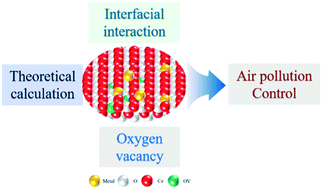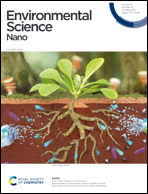Recent advances in metal/ceria catalysts for air pollution control: mechanism insight and application
Abstract
Metal element doping or loading on cerium dioxide (ceria, CeO2) to form metal/CeO2 heterogeneous catalysts, in which CeO2 acts as the active component, support and promoter, has proven to be an excellent catalytic system with a wide range of applications. Over the past few decades, many metal/CeO2 catalysts composed of different metals and CeO2 have been prepared for air pollution control. Moreover, the structure–activity relationship and catalytic mechanism of metal/CeO2 were scrutinized through theoretical calculation based on density functional theory (DFT) and various advanced physicochemical analysis methods. Thus, a timely review of the recent advances is necessary to inspire further research. The main aim of this review is to summarize the recent research progress of metal/CeO2 catalysts in the field of air pollution control, especially the removal of volatile organic compounds (VOCs), particulate matter (soot), NOx, elemental mercury (Hg0), and hydrocarbons. The important role of interfacial interactions and oxygen vacancies (OVs) in the catalytic process is emphasized. In addition, the mechanism of the metal/CeO2 catalytic system is concisely presented based on the simulated properties of theoretical calculations as well as scientific design guidance for scenario-specific applications of metal/CeO2 catalysts. Finally, perspectives based on the research status of metal/CeO2 catalysts are proposed to provide reference and inspiration for the application of metal/CeO2 catalysts in air pollution control.



 Please wait while we load your content...
Please wait while we load your content...